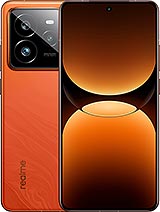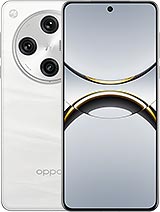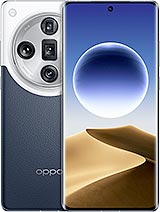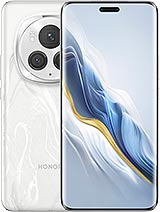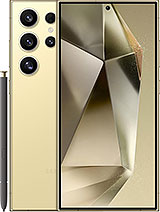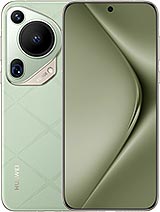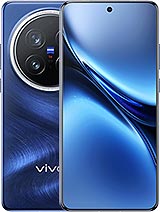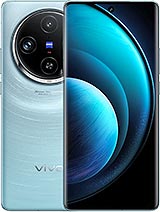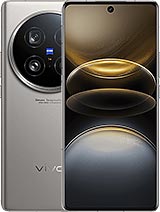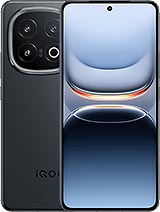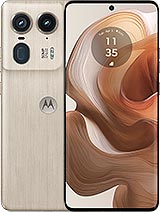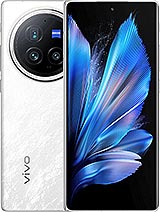vivo X200 Pro (Global) review

Update, 08 Jan 2025: We received a global version of the phone (as opposed to the China-specific one we had previously) and we re-ran the full set of tests. This page has been updated with the results for the global version and all commentary now refers to the global model unless explicitly stated otherwise.
6.78-inch OLED display is hard to fault
The X200 Pro is equipped with an OLED display that is apparently so good that you'd struggle to find something to complain about. It's a high-refresh rate LTPO panel that can go as high as 120Hz (trivial stuff), but also as low as 0.1Hz (refresh every ten seconds). There's also high-frequency 2160Hz PWM dimming employed so even those who are more sensitive to flickering should be fine at low brightnesses.

The 6.78-inch display has the same resolution as that on the X100 Pro - 1,280x2,800 - not the most common numbers and slightly lower than the X100 Ultra's proper 1,440p. It's still plenty sharp, of course, with a pixel density of 452ppi.
In the phone's product pages, vivo claims a maximum peak local brightness of 4,500nits. In our own standardized setup, we measured a little under 1,900nits in auto brightness mode with the phone under bright ambient light. It's a significant step up from the X100 Pro, a notch above the X100 Ultra, and one of the highest numbers we've seen (though the Pixels do go higher).
Vivo does remain conservative with the nits it's letting you have when you're setting the brightness manually - the X200 Pro only does around 620, while we've come to expect 800-ish from recent high-end phones (the Pixel 9 Pro XL again doing some serious overachieving here). That said, the auto should be keeping you happy.
Refresh rate
The X200 Pro's specs list a refresh rate range between 0.1Hz and 120Hz. The phone would readily switch down to 1Hz, according to the Android refresh rate utility, regardless of which of the three refresh rate modes was active. We never saw a 0.1Hz reading, but it's probably reserved for always-on display uses, where having the tool active might be interfering, not to mention we're not exactly sure the indicator can show values below 1Hz in the first place.

Videos get refresh rates to match their frame rates - or sort of - 30 and 60fps clips get relatively steady 30 and 60Hz, while 24 and 48fps videos get something like an averaged 48Hz, with the phone alternating between between 36 and 72Hz. Everything looks smooth anyway. We also got 120Hz in games, both 3D and arcade ones, though you need to be in the 'High' refresh rate mode - the Smart option appears to set a 60Hz cap on games.
Streaming and HDR
The X200 Pro supports all major HDR video standards, including HDR10+ and Dolby Vision - that's a step up from the X100 Pro, which stopped short of offering Dolby Vision.
Netflix also recognizes the X200 Pro (the global variant, but also, somewhat surprisingly, the Chinese version too) as supporting Dolby Vision and HDR10 and will happily play back FullHD streams thanks to the Widevine L1 certification. HDR in YouTube is also supported.

The phone also supports the Android Ultra HDR photo standard for displaying HDR photos with enhanced tone mapping and a brightness boost for highlights. It works in the in-house gallery, but also in Google Photos, and in Chrome - for images from other compliant phones, too.
vivo X200 Pro battery life
The X200 Pro is powered by a 6,000mAh battery, a most welcome upgrade to the already larger-than-most 5,400mAh capacity of the X100 Pro. It's also a bump in mAhs compared to the X100 Ultra's 5,500mAh spec.
The X200 Pro also uses the silicon-carbon type of anode in its battery tech (like the X100 Ultra, and unlike the conventional graphite-based X100 Pro), making its single-cell unit fare better in the energy density chart and enabling its use in environments with temperatures down to -20 degrees Celsius. vivo obviously advises against prolonged use in such cases, but it's good to know that your X200 Pro will be up for the occasional extreme use case.
In the more comfortable 20C+ degrees of our testing setup, the vivo did post pretty great numbers in our Active Use test. The nearly 10 hours of gaming is perhaps the most impressive result, but almost 14 hours of web browsing and 18-ish hours of looping videos are also solid figures. The 30 hours of voice calls are pretty decent too.
All in all, the combined Active Use Score of just over 15h is a great result by the X200 Pro.
Our new Active Use Score is an estimate of how long the battery will last if you use the device with a mix of all four test activities. You can adjust the calculation based on your usage pattern using the sliders below. You can read about our current battery life testing procedure here. For a comprehensive list of all tested devices so far, head this way.
Charging speed
The X200 Pro is rated for 90W of wired charging and ships with a 90W adapter. The single-cell design of the battery means you shouldn't expect the same speeds you'd get from the dual-cell X100 Pro, for example - vivo prioritized energy density over charging speed on this one.

In our testing, the phone maxed out at around 74W for a brief moment at the very beginning of the process and then dropped quickly and sharply. The max watts will only tell you a small part of the story anyway, and it's the actual time it takes to charge that matters.
The X200 Pro completed an empty-to-full run in 49 minutes - not really class-leading or anything, but not too bad either. The 68% at the half-hour checkpoint is also decent.
The X200 Pro supports wireless charging, where it maxes at 30W according to vivo's spec. You'll still need one of the company's proprietary 50W charging pads for that. It's the same discrepancy that we already saw on the X100 Ultra - apparently that's somewhat of a limitation of the silicon carbon battery, in vivo's world at least, since the conventional X100 Pro is rated for the full 50W (which is admittedly even more of a theoretical number in wireless charging than it is for wired charging).
If you are more concerned about battery health than the speed of charging, you should know that the X200 Pro has the Fast charging turned off by default, and you'll get a prompt on the lockscreen to engage it on a case by case basis, which is a nice feature. You can also enable it to kick in by default in settings.
There's an 'Optimized battery charging' option that will learn your charging habits and do the final top-off just before the usual time you pick up your phone from the charger - the ordinary drill.
There's no option to limit charging to a certain level (90% or 80%, for example), if you absolutely want to make sure you max out the battery's long-term health.
Speaker test
The vivo X200 Pro has a stereo speaker setup with one unit on the bottom, and another one up top that fires forward and doubles as an earpiece. The top speaker gets the left channel in portrait orientation, and the speakers switch channels depending on the landscape orientation, while also maintaining strict separati on.


Bottom speaker • Top speaker/Earpiece
The phone earned a 'Very Good' rating for loudness in our testing, the same as the previous Pro, both of them a notch above the Ultra. When it comes to quality, the Ultra does sound bigger than either Pro, despite the numerical disadvantage in the integrated loudness - the Pros don't quite have the same low-end punch and the X200 Pro is particularly mid-forward. It's not bad or anything, it's just not quite as exciting as we'd have hoped.
Use the Playback controls to listen to the phone sample recordings (best use headphones). We measure the average loudness of the speakers in LUFS. A lower absolute value means a louder sound. A look at the frequency response chart will tell you how far off the ideal "0db" flat line is the reproduction of the bass, treble, and mid frequencies. You can add more phones to compare how they differ. The scores and ratings are not comparable with our older loudspeaker test. Learn more about how we test here.
Reader comments
- techyrock
- 17 Apr 2025
- 6PX
iQOO phones are gaming with a gaming Q series chip, whereas Vivo's X series are Camera oriented phones with V series chips for photography, its like asking Ford to have both raptor and mustang in one car instead of two
